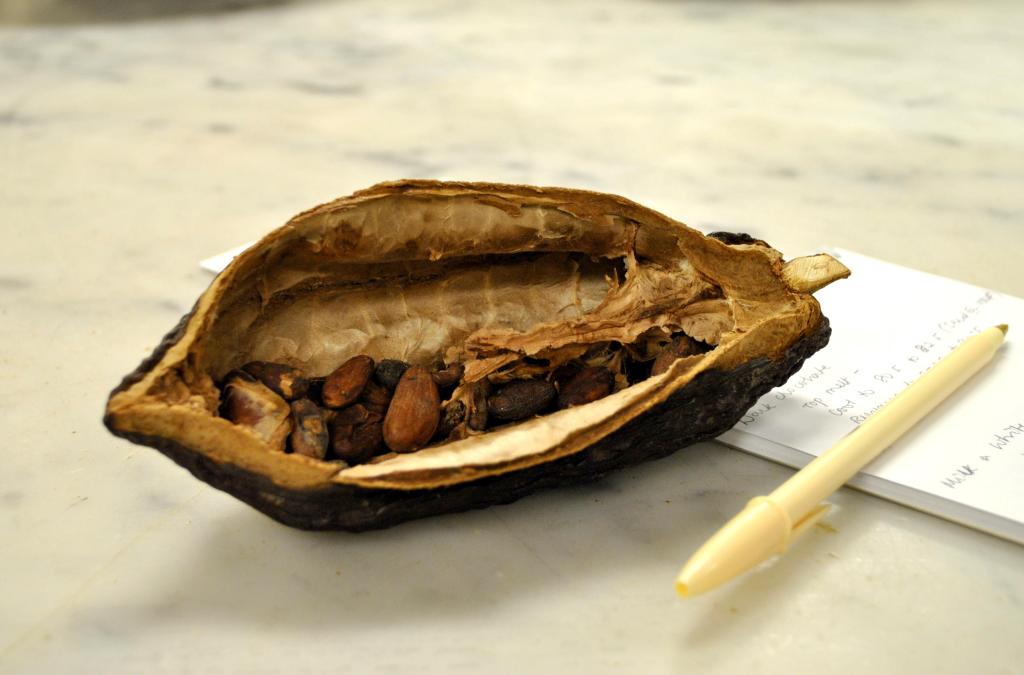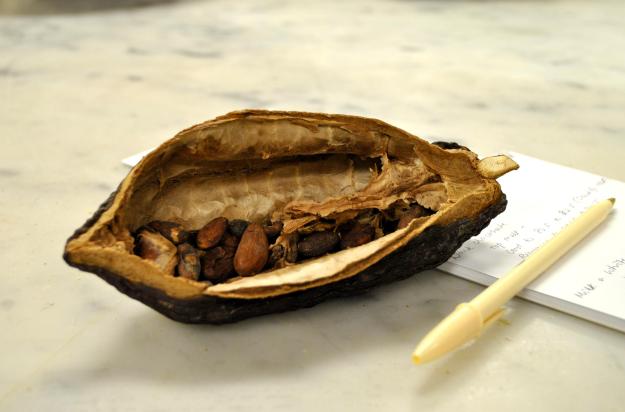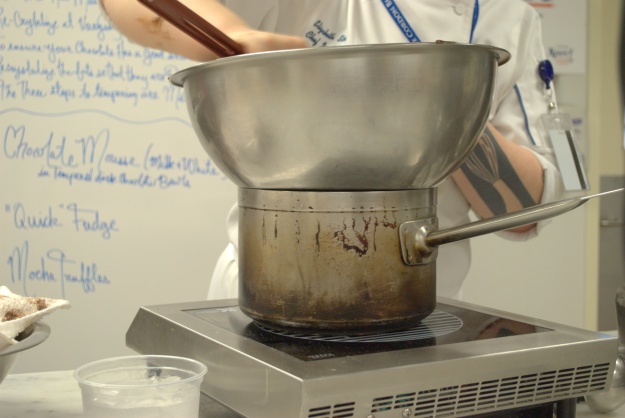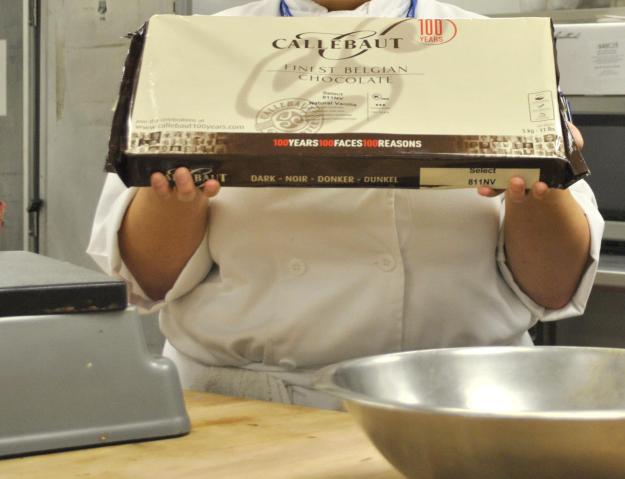Theobroma Cacao, my nemesis and my kryptonite. Who doesn’t love chocolates, at least the good ones? I LOVE chocolates. So, couple of years back I took interest in learning the art of chocolates and did a lot of on line research plus book reading. But then, there is only so much one can learn from these resources. There is nothing like hands-on experience, witnessing trained professionals work methodologically and share their wealth of knowledge gained over decades. Hence, I opted to do a course in the ‘Art of Chocolates’ from Le Cordon Bleu, San Francisco. I’ll be sharing some of the chocolatey things I learned in LCB.
FROM BEAN TO BAR
Chocolate comes from the cocoa pod (the fruit) that contains the cocoa bean. The variety of the tree, environmental factors like the amount of sunlight, rain and the work of the farmers in harvesting, fermentation and drying affect the final product. Cocoa beans goes through various stages – Roasting, Crushing, Grinding, Refining and Conching. The cocoa nibs inside the bean are ground to a paste to get cocoa liquor (not alcohol) which contains cocoa butter and cocoa solids.
To this cocoa liquor if extra cocoa butter, sugar, flavoring and permitted emulsifier (soy lecithin) is added, that makes COUVERTURE. This has to be tempered. If vegetable fats like palm oil, shea butter, illipe, coconut oil etc is added instead cocoa butter, it is called COMPOUND. Compounds do not need tempering. It’s in temper. Often referred to as candy bars. If the cocoa solids are ground to a powder, it’s called COCOA POWDER. Natural or Dutch processed (made alkaline by treatment with potassium carbonate)
Then comes the final stage, Tempering. While tempering, chocolate undergoes a temperature curve that takes it from 113 F- 82.4 F before being increased again to 90 F. This curve gives chocolate the perfect stability.
What is tempering? It’s certainly not just melting. Melting is not enough to retain its qualities when used in another form. Tempering is the key to making small chocolates, molded bars, decorations etc. Tempering is not just for the looks but for good taste too. It involves putting chocolate through a cycle of temperatures (heat/cool/heat). This will guarantee a brilliant, melting, shiny and breakable chocolate.
What’s perfectly tempered chocolate? It’s shiny and smooth with the crunch between your teeth and the snap (breaks clean) needed to cut it with a melting texture that dissolves in your mouth. Do you know a dark gourmet chocolate has 400 aromatic notes. The more the cocoa, better the chocolate. However, the origin of the fruit is important in dictating it’s aroma.
Tempering curves
Dark chocolate – Room temperature – Top melt 131 F – 136 F – Cool 80 F – 84 F – Rewarm 87 F – 90 F.
Milk chocolate – Room temperature – Top melt 113 F – 122 F – Cool 81 F – 82 F – Rewarm 84 F – 86 F.
White chocolate – Room temperature – Top melt 113 F – 122 F – Cool 79 F – 81 F – Rewarm 82 F – 84 F
VARIETIES OF CHOCOLATE
Dark chocolate is most forgiving. White chocolate is plain finicky
DARK CHOCOLATE
Unsweetened chocolate – It contains almost 100% cocoa solids, about half of it might be fat (cocoa butter). Used for baking. Not suitable for eating as it’s way too bitter.
Bittersweet chocolate – A dark sweetened chocolate which must contain at least 35% cocoa solids. Good quality bittersweet chocolate usually contains 60% to 85% cocoa solids depending on brand.
Sweet dark chocolate – Similar to semi-sweet chocolate, it is not always possible to distinguish between the flavor of sweet and semi-sweet chocolate. If a recipe asks for sweet dark chocolate you may also use semi-sweet chocolate. Contains often 35-45% cocoa solids.
Semi-sweet chocolate – This is the classic dark baking chocolate used for cakes, cookies and brownies. Can be used instead of sweet dark chocolate. It has a good, sweet flavor. Contains often 40-62% cocoa solids
MILK CHOCOLATE
Sweet chocolate which normally contains 10-20% cocoa solids (which includes cocoa and cocoa butter) and more than 12% milk solids.
WHITE CHOCOLATE
Chocolate made with cocoa butter, sugar, milk, emulsifier, vanilla and other flavorings. It does not contain any non-fat ingredients from the cacao bean and has therefore an off-white color. Hence, white chocolate cannot be called ‘chocolate’ because of the low content of cocoa solids.
For Ganache recipe and it’s many uses, check here.





I truly appreciate your feedback. Drop me a word.